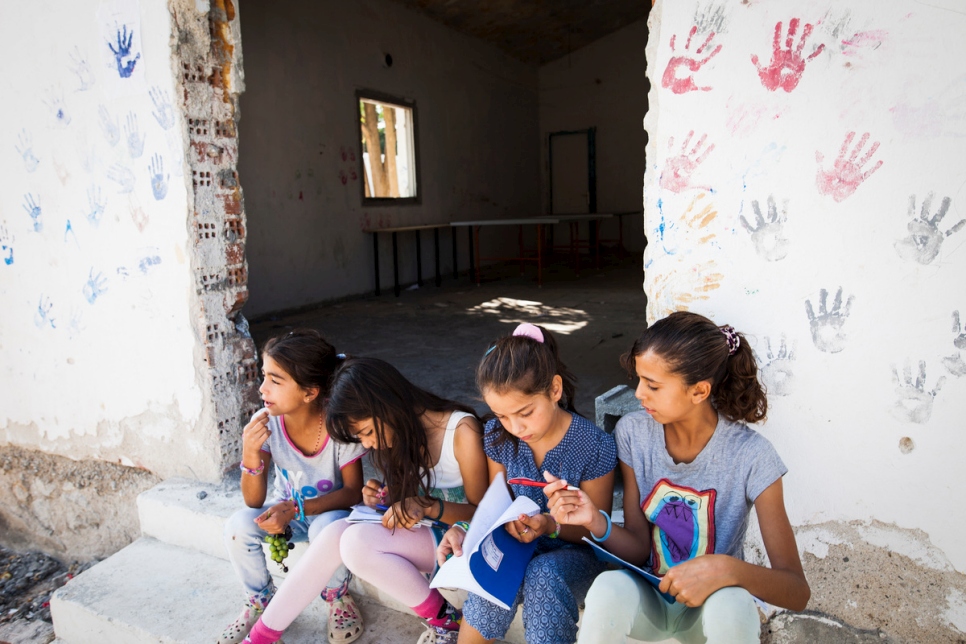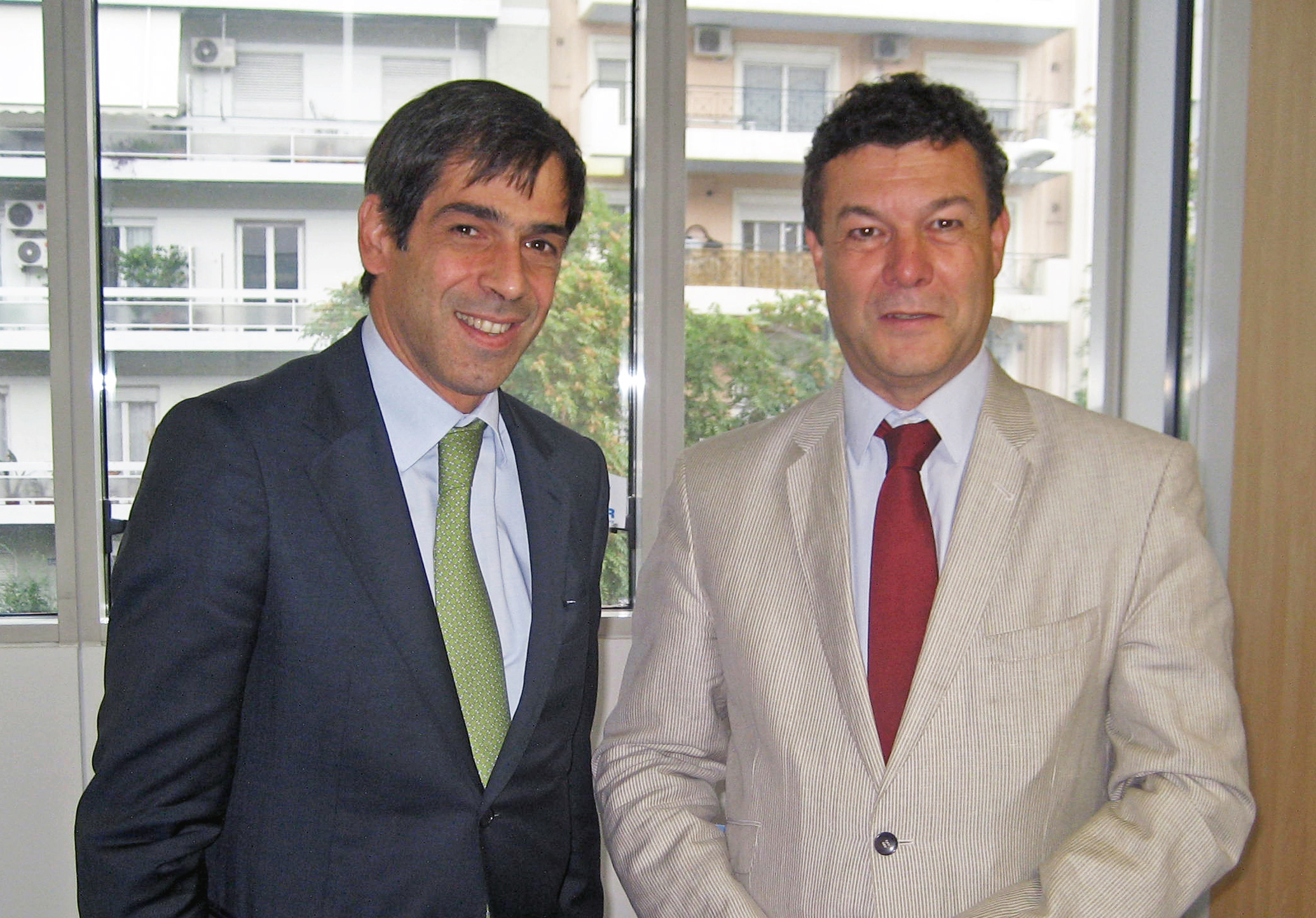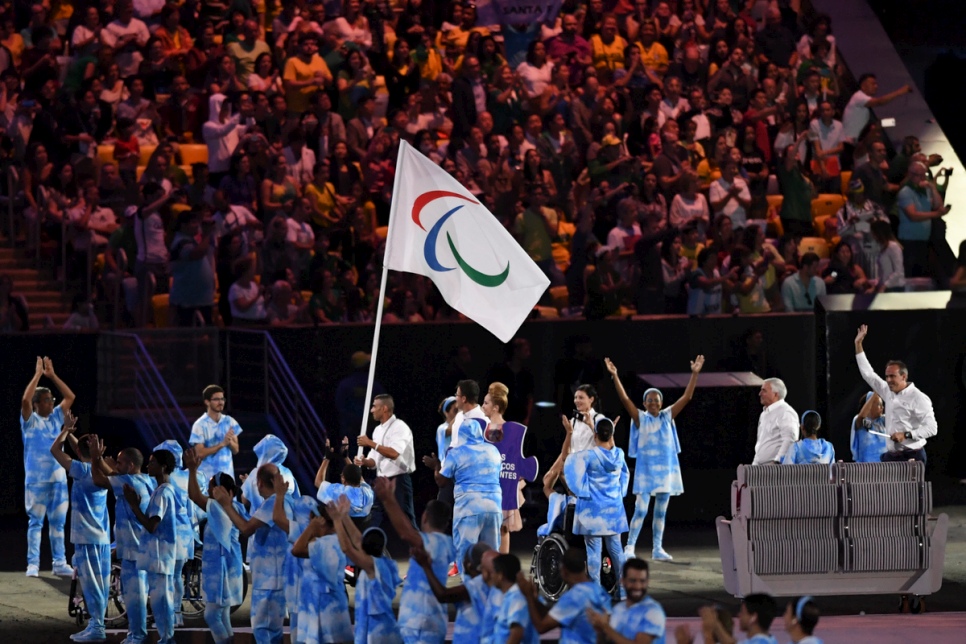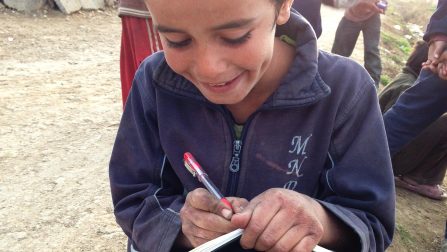War stokes further growth in forced displacement in first half 2014
The UN refugee agency on Tuesday reported that war in the Middle East, Africa and elsewhere had uprooted an estimated 5.5 million people during the first six months of 2014, signalling a further rise in the number of people forcibly displaced.
UNHCR’s new “Mid-Year Trends 2014” report shows that of the 5.5 million who were newly displaced, 1.4 million fled across international borders becoming refugees, while the rest were displaced within their own countries. Taking into account existing displaced populations, data revisions, voluntary returns and resettlement, the number of people being helped by UNHCR stood at 46.3 million as of mid-2014 – some 3.4 million more than at the end of 2013 and a record high.
Among the report’s main findings are that Syrians, for the first time, have become the largest refugee population under UNHCR’s mandate (Palestinians in the Middle East fall under the care of the UN Relief and Works Agency), overtaking Afghans, who had held that position for more than three decades. At more than 3 million as of June 2014, Syrian refugees now account for 23 per cent of all refugees being helped by UNHCR worldwide.
Despite dropping to second place, the 2.7 million Afghan refugees worldwide remain the largest protracted (at least five years) refugee population under UNHCR care. After Syria and Afghanistan, the leading countries of origin of refugees are Somalia (1.1 million), Sudan (670,000), South Sudan (509,000), the Democratic Republic of the Congo (493,000), Myanmar (480,000) and Iraq (426,000).
Pakistan, which hosts 1.6 million Afghan refugees, remains the biggest host country in absolute terms. Other countries with large refugee populations are Lebanon (1.1 million), Iran (982,000), Turkey (824,000), Jordan (737,000), Ethiopia (588,000), Kenya (537,000) and Chad (455,000).
By comparing the number of refugees to the size of a country’s population or economy, UNHCR’s report puts the contribution made by host nations into context: Relative to the sizes of their populations Lebanon and Jordan host the largest number of refugees, while relative to the sizes of their economies the burdens carried by Ethiopia and Pakistan are greatest.
In all, the number of refugees under UNHCR’s mandate reached 13 million by mid-year, the highest since 1996, while the total number of internally displaced people protected or assisted by the agency reached a new high of 26 million. As UNHCR only provides help for the internally displaced in countries where governments request its involvement, this figure does not include all internally displaced people worldwide.
“In 2014 we have seen the number of people under our care grow to unprecedented levels. As long as the international community continues to fail to find political solutions to existing conflicts and to prevent new ones from starting, we will continue to have to deal with the dramatic humanitarian consequences,” said UN High Commissioner for Refugees António Guterres.
“The economic, social and human cost of caring for refugees and the internally displaced is being borne mostly by poor communities, those who are least able to afford it. Enhanced international solidarity is a must if we want to avoid the risk of more and more vulnerable people being left without proper support.”
Another major finding in the report is the shift in the regional distribution of refugee populations. Until last year, the region hosting the largest refugee population was Asia and the Pacific. As a result of the crisis in Syria, the Middle East and North Africa have now become the regions hosting the largest number of refugees.
UNHCR’s Mid-Year Trends 2014 report is based on data from governments and the organization’s worldwide offices. As information available to UNHCR at this point in the year is incomplete it does not show total forced displacement globally (those figures are presented in June each year in UNHCR’s annual “Global Trends” report, which as of end 2013 showed that 51.2 million people were forcibly displaced worldwide). Nonetheless, the data it presents is a major component of the global total and an important indicator of worldwide refugee and IDP trends.
The full report can be downloaded here: http://unhcr.org/54aa91d89.html
Page 3 of 6
-

UNHCR, IOM and partners launch new plan to respond to Europe’s refugee and migrant situation
19 Jan 2017UNHCR, IOM and 72 other partners are launching today a new strategy and appeal to help respond to the situation of refugees and migrants in Europe in 2017. The Regional Refugee and Migrant Response Plan aims at complementing and reinforcing Governments’ efforts to ensure safe access to asylum and the […]
-

A “Blue Dot” with huge impact for refugee women and children
4 Nov 2016Under the shadow of the trees a group of children is making garlands, flowers and animal figures out of cardboard in the open accommodation site of Schisto, located in the southern suburbs of Athens. Shortly afterwards, a blackboard is set up in the same place and a Greek language class […]
-

Hayat’s story: A new beginning in Spain
22 Oct 2016Fourteen-year-old Sami gets carried away when he listens how the everyday life of teenagers was, during the ancient Greek Classical era, and stands in awe of the warriors’ helmets. Nine-year-old Rahaf cannot keep her eyes off the big, marble Cycladic figurine of a woman with her hands crossed. Twelve-year-old Abdal […]
-

AXA supports the work of the UN Refugee Agency in Greece
13 Oct 2016The CEO of AXA, Errikos Moatsos, and the Representative of the UN Refugee Agency (UNHCR) in Greece, Philippe Leclerc, met at UNHCR’s premises in Athens earlier this week. The main topic of the meeting was AXA’s financial support for the immediate relief of refugees in Greece. With the support of […]
-
Statistics
5 Oct 2016 -
Photos and Videos
5 Oct 2016 -
Stories
5 Oct 2016 -
Briefing Notes
5 Oct 2016 -
Press Releases
5 Oct 2016 -

Displaced athletes make historic debut at Paralympic Games in Rio
8 Sep 2016RIO DE JANEIRO, Brazil – To rousing cheers and a standing ovation, two para-athletes who faced the additional challenge of being displaced from their homeland made history on Wednesday leading the parade of athletes at the Opening Ceremony of the 2016 Paralympic Games in Rio de Janeiro. Proudly carrying the flag […]
In This Section

Thematic film screenings on migration
Athens, 17 September 2020 – The Greek mission of the International Organization for Migration (IOM) and UNHCR, the UN Refugee Agency, in Greece, with the support of the Municipality of Ioannina, are co-organizing a thematic cycle of film screenings. The event aims to create an open channel of communication between […]


